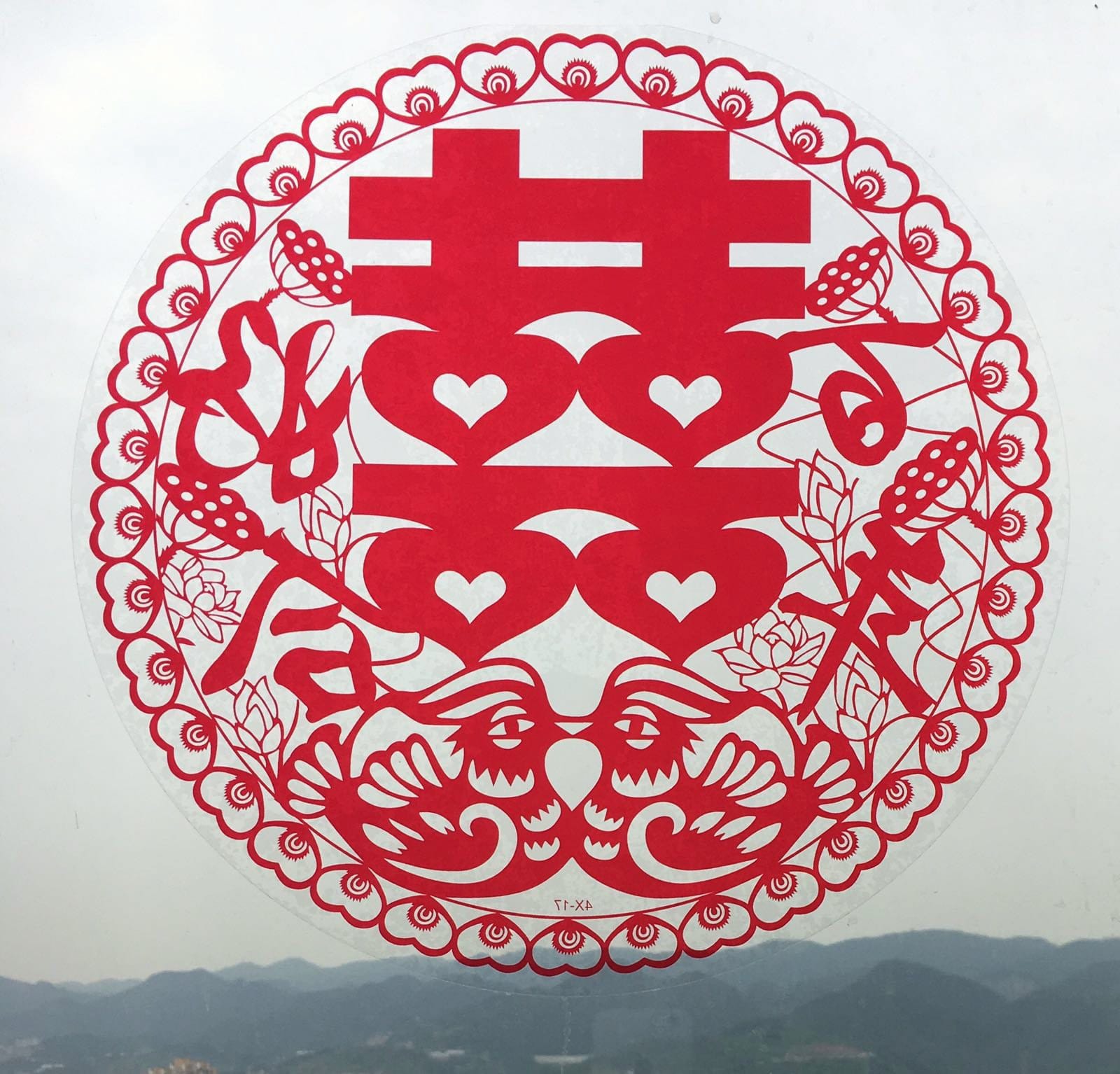Po Toi Island
Getting away from it all, while not.

There is only one boat in and one boat out, and it comes on Tuesdays and Thursdays. Small boats go there a lot, as it is nice to swim to the island, but there are no beaches, and it is the furthest point in Hong Kong. Po Toi is an inconvenient place to visit, and maybe that is why it is the perfect place to visit.
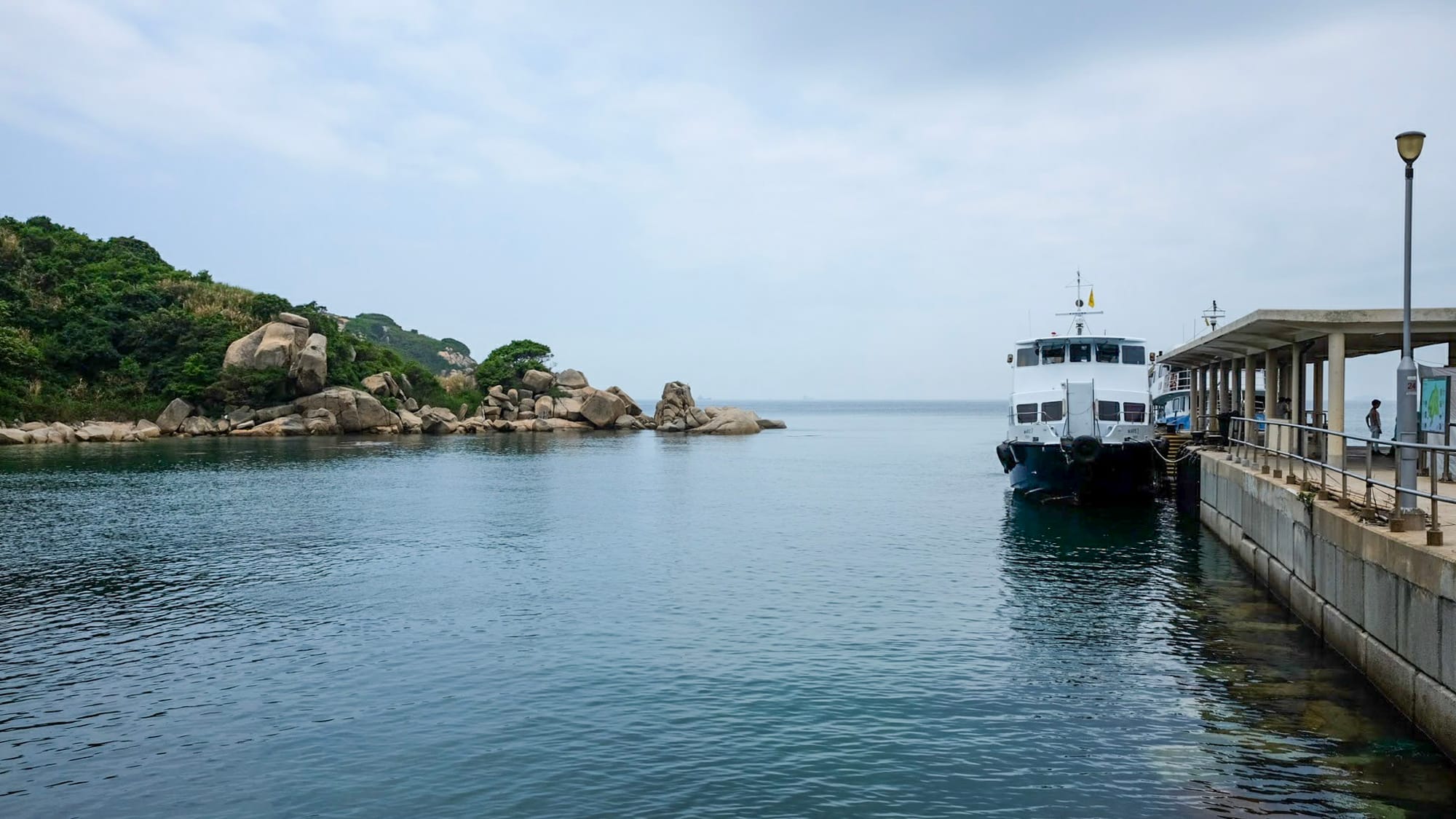
The ferry leaves at 10 a.m. on Tuesdays and Thursdays from the Aberdeen Ferry place. It’s not a pier but more like a floating platform. The boat is filled with birdwatchers in camouflage. They look like they are going to war against birds, but shooting with expensive cameras rather than rifles. The others look like hardcore hikers, all covered head to toe in light-fitting gear. The boat is only 45 minutes and somewhat air-conditioned. It costs $50, including the trip back, but don’t lose the ticket. Po Toi Islands are a collection of islands lying 3 km away from Hong Kong Island.
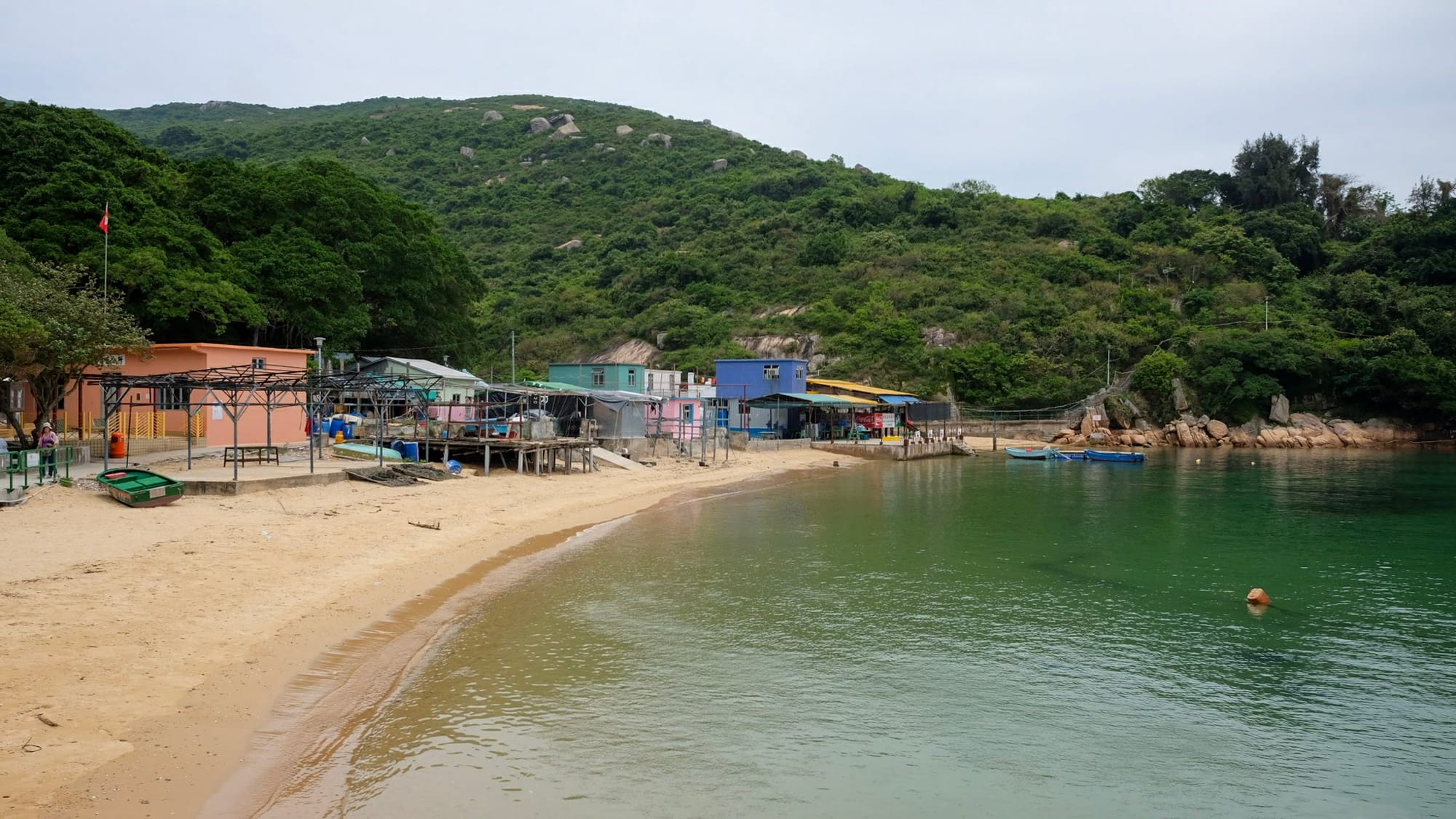
The main island, with the village and boat pier, is about 4 km in size. In the past, it was home to over 1,000 people who relied on the fish to make a living. Over the years, as overfishing and people getting older increased, more and more people moved to the mainland. The primary school on the island closed down in 1981. Since then, fewer and fewer people have lived on the island, and it has become a popular destination for hikers and birdwatchers.
After getting off the ferry, there are two choices: a long trek around or a short one to the southern area. The ferry out is at 2 pm. The shorter one is good for someone who is not as fit and is worried about time. The path runs through some bushes, then leads to the open area of rocks, grass, and sea. Po Toi Islands are a collection of islands lying 3 km from Hong Kong Island. The main island, with the village and boat pier, is about 4 km in size. In the past, it was home to over 1,000 people who relied on the fish to make a living. Over the years, as overfishing and people got older, more and more people moved to the mainland. The primary school on the island closed down in 1981. Since then, fewer and fewer people have lived on the island, and it has become a popular destination for hikers and birdwatchers. After getting off the ferry, there are two choices: a long trek around or a short one to the southern area. The ferry out is at 2 pm. The shorter one is good for someone who is not as fit and is worried about time. The path is along some bushes, and then it leads to the open area of rocks, grass, and sea
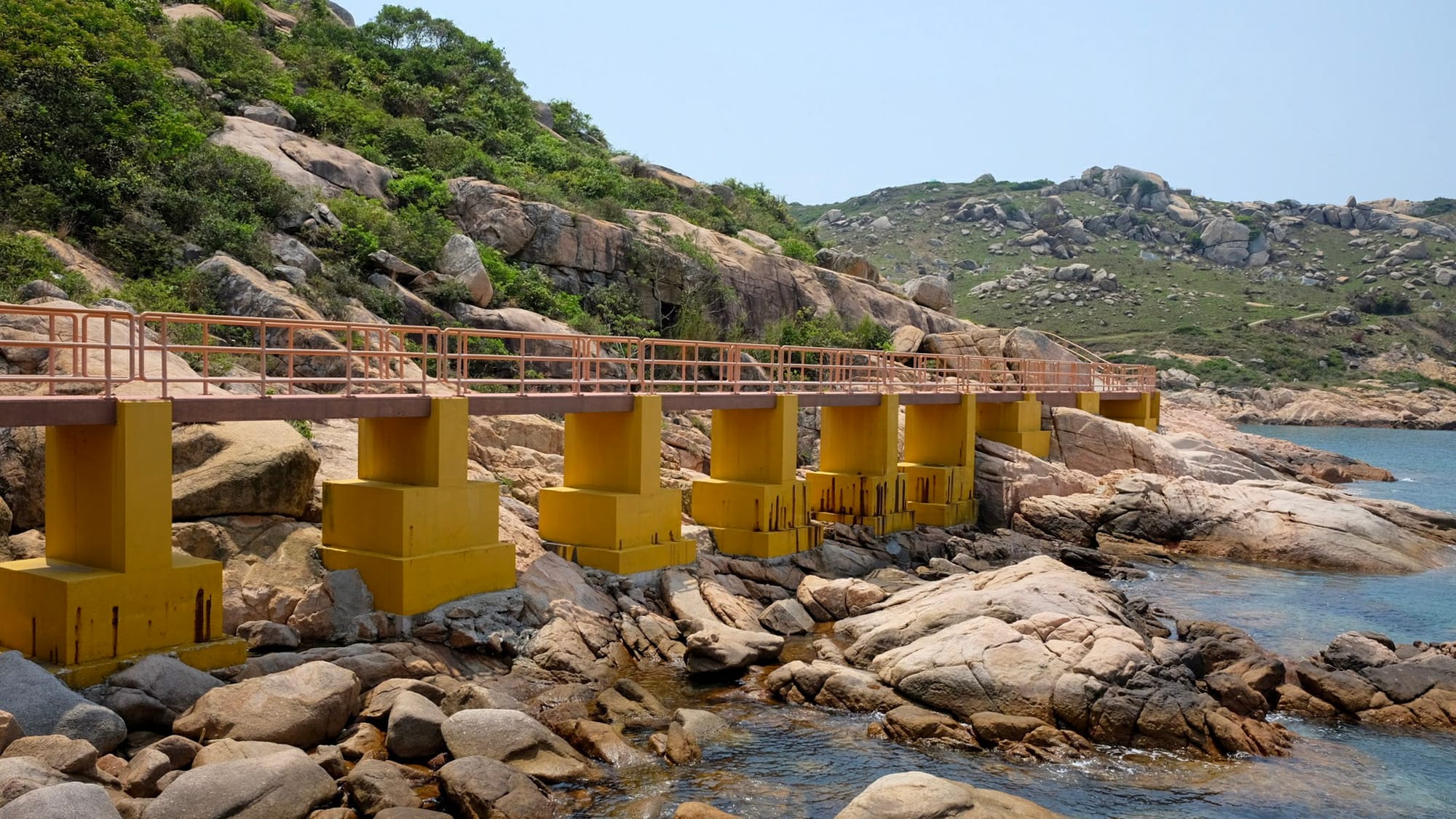
The trail is well-maintained by the Lands Department. They built some bridges to make the hiking easier. The ‘lighthouse’ at the top is the highlight of the southern tour. Along the way are some tents from the May Day holiday from the day before. One can rent some camping gear from one of the shops in the small village for the night, though they don’t speak English. Hiking in the exposed area gives some great views, but it is hot. The path is not strenuous, but the heat can be. At the top of the hill is a small square white box with a light on the top.
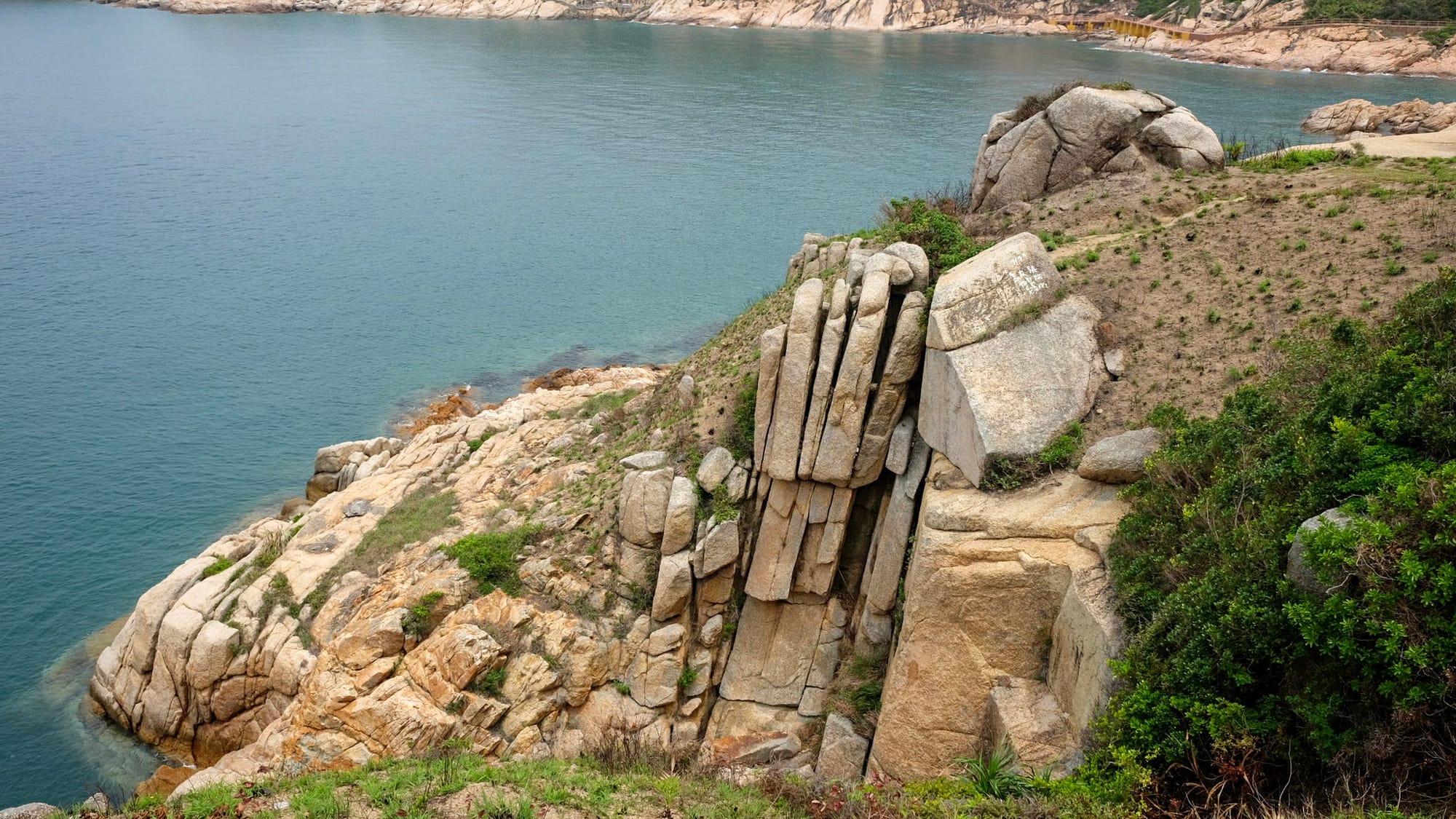
Many rock formations have names for what they represent or depict. There is a palm that looks like the hands of the Buddha held together, as they do in the many statues. It is about 100 feet tall, with four straight cracks formed over the years of erosion by sea waves. Walking back into the village is easy, but there isn't much, with only three restaurants catering to hikers and bird watchers. There are additional ferries during the Tin Hau Festival from a week ago, but that was a special occasion. The route is easy to follow as it is well-paved and maintained. The furthest point is the Tin Hau Temple.
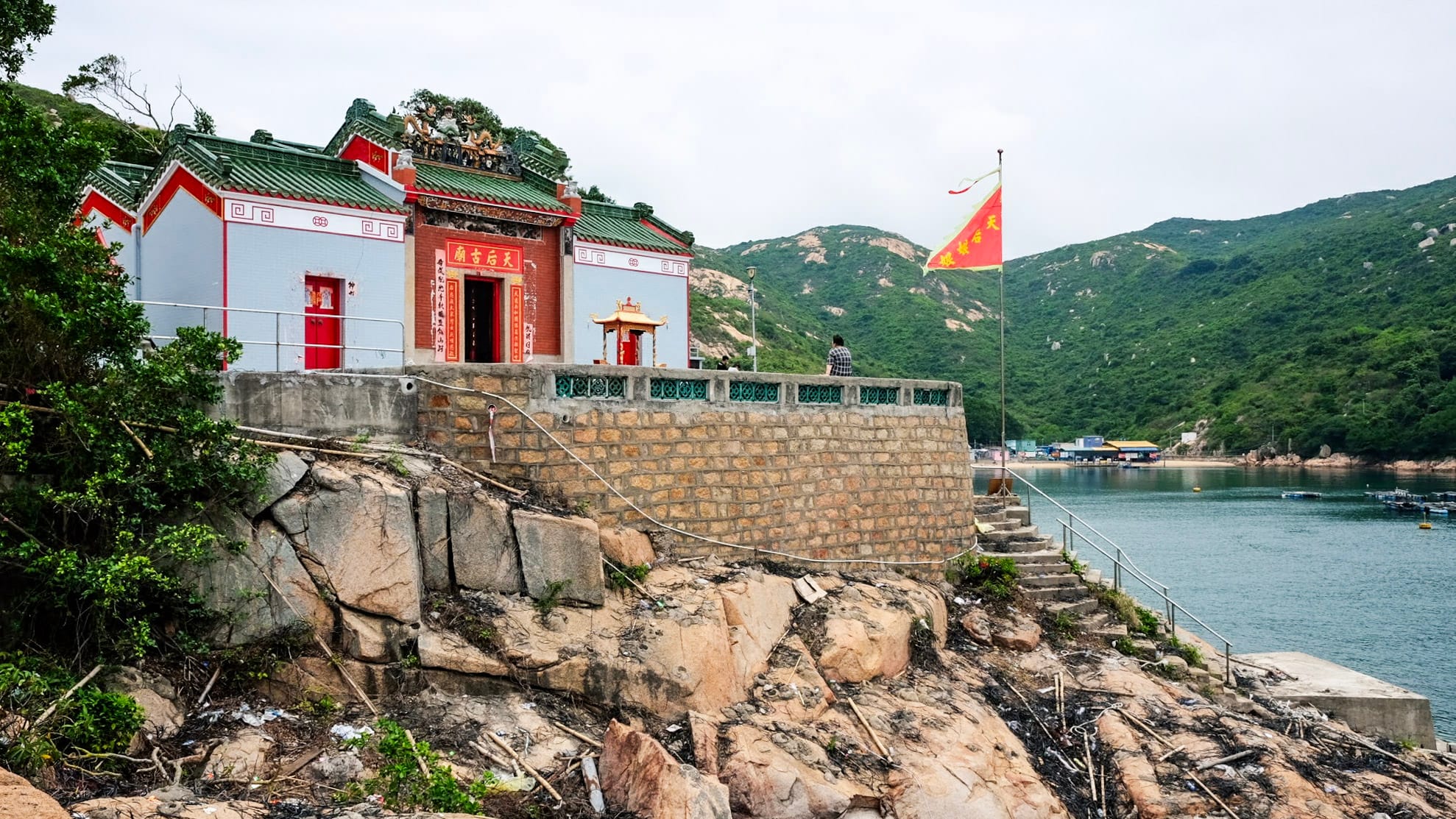
It is on the northern shore of Tai Wan and has a 170-year history. Tin Hau is the local god of the sea, whom most pay respect to for a good fish harvest. People still come to the temple, even though many from the island have moved to Hong Kong. Walking around the island is nice, mainly because it feels alone. It is getting harder and harder to find quiet places in Hong Kong. Most hiking trails are busy on weekends and holidays; I'm not sure how busy this place gets then.
